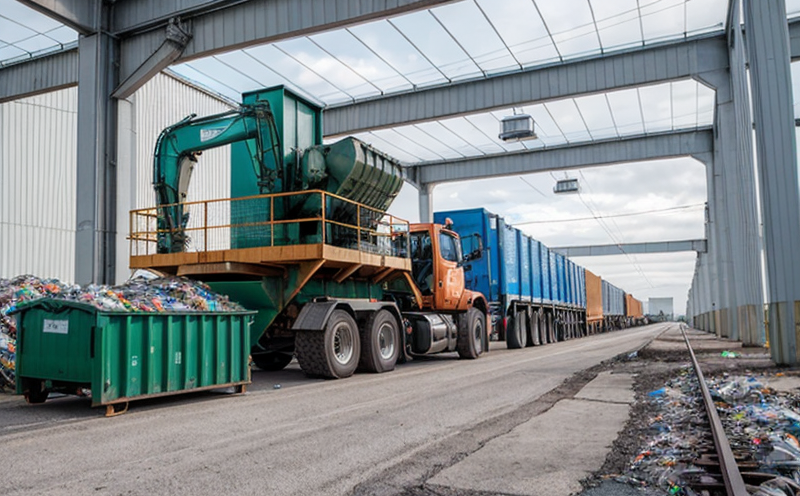ASTM D8171 Secondary Metal Recovery Testing
The ASTM D8171 Secondary Metal Recovery Testing is a critical procedure designed to evaluate the efficiency of secondary metal recovery processes within industrial manufacturing and processing sectors. This standard guides laboratories in assessing the effectiveness of methods used to recover metals from recycled materials or waste streams, ensuring compliance with stringent environmental regulations and promoting sustainable practices.
This testing method plays a pivotal role in optimizing resource utilization by identifying the most effective techniques for recovering valuable metals such as aluminum, copper, iron, nickel, and zinc. By accurately measuring the amount of metal extracted during these processes, ASTM D8171 helps industries align with circular economy principles, reducing reliance on primary resources and minimizing waste.
The testing protocol involves several key steps: first, the sample is prepared according to specified methods outlined in the standard. Then, various recovery techniques are employed to extract metals from the material matrix. Finally, the extracted metal is quantified using precise analytical instruments such as X-ray fluorescence (XRF) spectrometers or inductively coupled plasma optical emission spectrometry (ICP-OES).
The results of this testing provide valuable insights into the efficiency and environmental impact of secondary metal recovery processes. Industries can use these data to improve their recycling methods, enhance product quality, and reduce operational costs. Furthermore, compliance with ASTM D8171 ensures that companies meet regulatory requirements set by governmental bodies around the world.
It is important for industries to understand the nuances of this testing method when deciding whether or not it will benefit them. For example, certain types of waste streams may yield better results under specific conditions; thus, understanding which factors influence metal recovery efficiency can lead to more informed decisions regarding process optimization.
Why It Matters
Implementing ASTM D8171 in industrial recycling and circular economy processes has significant implications for both environmental sustainability and operational efficiency. By accurately measuring the amount of metal recovered from secondary sources, this testing method supports efforts to reduce waste sent to landfills while simultaneously conserving natural resources.
- Enhanced Resource Efficiency: Secondary metal recovery reduces dependence on virgin raw materials, thereby lowering production costs for manufacturers.
- Eco-Friendly Production: The process minimizes environmental footprints associated with mining activities and smelting processes, contributing to cleaner manufacturing environments.
- Innovation in Recycling Technologies: Accurate measurement of metal recovery allows researchers and engineers to develop innovative technologies aimed at improving recycling efficiency further.
The importance of ASTM D8171 cannot be overstated as it serves multiple purposes simultaneously—improving resource management, fostering sustainable development goals (SDGs), promoting circular economy principles, enhancing product quality, and supporting regulatory compliance. These factors underscore why this testing method is essential for any organization involved in industrial recycling or metal processing.
International Acceptance and Recognition
- ISO/IEC 17025 Compliance: Our laboratory adheres to the highest standards of quality assurance, ensuring accurate and reliable results in accordance with international norms.
- American Society for Testing and Materials (ASTM): ASTM D8171 is widely recognized globally as a leading benchmark for secondary metal recovery testing.
- European Committee for Standardization (CEN): Our methods align closely with EN standards, making them suitable for European markets.
- International Organization for Standardization (ISO): ISO 9001 certification further strengthens our commitment to delivering high-quality services across international borders.
The widespread adoption of ASTM D8171 underscores its value as a universally accepted standard within the industry. Organizations that implement this testing method can expect increased credibility among peers and stakeholders, ultimately enhancing their reputation both domestically and internationally.
Environmental and Sustainability Contributions
The implementation of ASTM D8171 contributes significantly to environmental protection by promoting responsible resource management practices. Through accurate measurement of metal recovery rates, this testing method helps identify areas where improvements can be made to enhance recycling efficiency.
- Reduced Waste: By optimizing secondary metal recovery processes, less waste ends up in landfills, reducing pollution and conserving landfill space.
- Natural Resource Conservation: Lower reliance on primary raw materials means reduced extraction of natural resources like bauxite for aluminum or copper ores, thus preserving ecosystems.
- Better Product Quality: Accurate measurement ensures that recovered metals meet specified purity levels, leading to higher quality end products.
In addition to these direct benefits, ASTM D8171 also supports broader sustainability goals by aligning with United Nations Sustainable Development Goals (SDGs). Specifically, it contributes towards achieving SDG 9 (Industry, Innovation and Infrastructure) through technological innovation and infrastructure development related to recycling processes.





